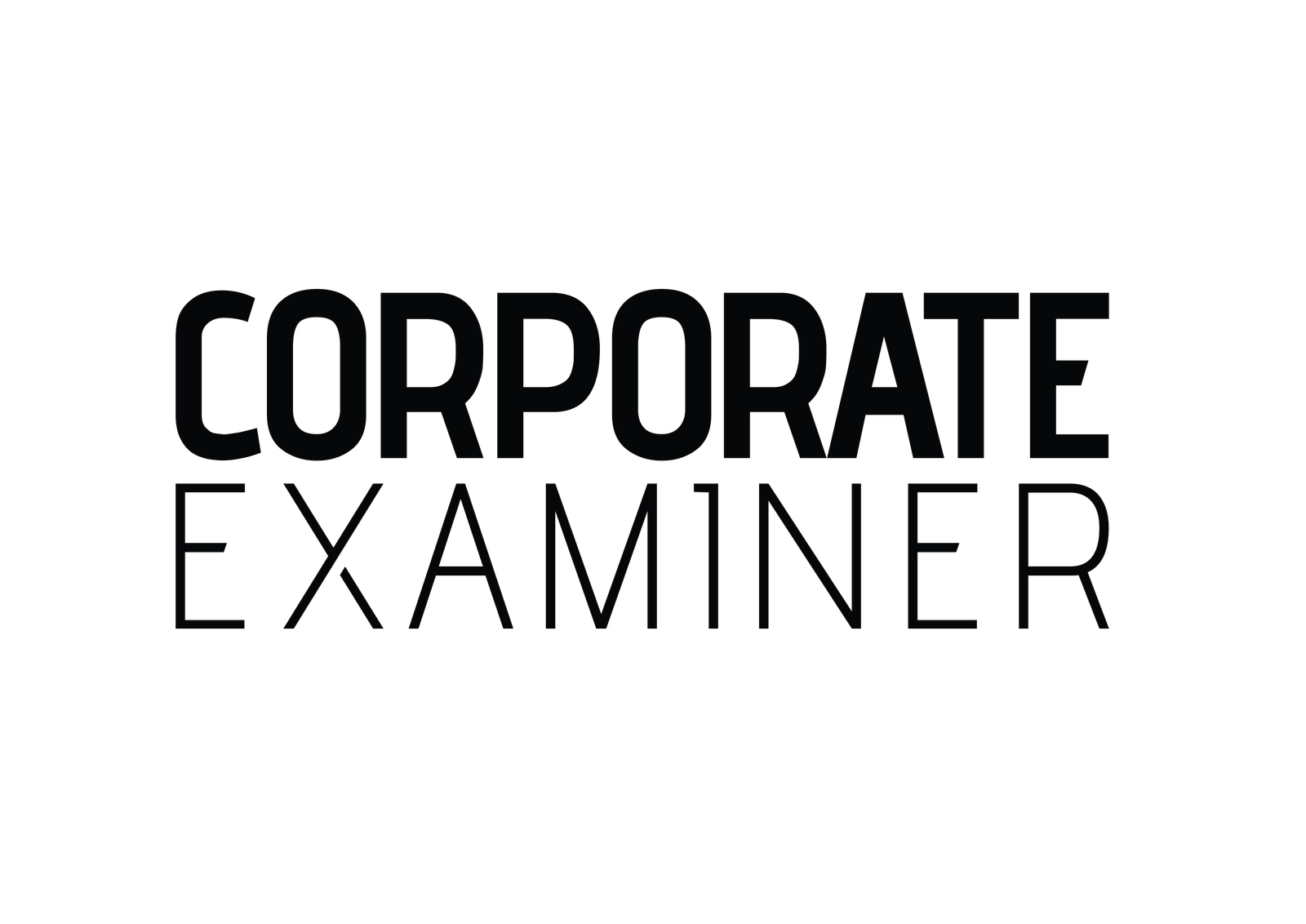Corporate Performance Management (CPM) systems help businesses achieve their goals. They combine budgeting, forecasting, and analytics. This integration is key to success in today’s data-driven world.
Automation and real-time insights help teams make quicker, better decisions. This reduces errors and increases accuracy.
Finance experts believe automation is crucial. 75% say it boosts efficiency, while 68% of CFOs face challenges with old tools like Excel. Advanced CPM solutions can cut financial reporting time by 30%.
82% of leaders believe digital transformation is vital. CCH Tagetik’s platform, for example, can speed up financial closes by 40%. This shows how these systems add value.
Old systems hold back 55% of companies. But modern CPM tools like Valsight and OneStream improve accuracy and teamwork. With 60% looking into AI, the move to integrated tech is clear.
Enterprise performance management systems are now a must. They help businesses stay competitive in today’s fast-paced market.
Key Takeaways
- 75% of finance teams say automation boosts efficiency through corporate performance management systems.
- CPM tools reduce reporting time by 30% and improve accuracy by 25% when integrated with existing software.
- Legacy systems slow down 55% of organizations, while CCH Tagetik cuts financial close time by 40%.
- 82% of leaders prioritize digital transformation to stay competitive in enterprise performance management.
- 60% of finance teams are adopting AI to enhance decision-making and operational agility.
What is a Corporate Performance Management System?
Corporate performance management systems (CPM) help businesses achieve long-term goals every day. They mix strategic planning with real-time data. This way, every department works towards the same business goals.
Definition and Overview
CPM is more than just spreadsheets and reports. It’s a system that combines business performance analytics with useful insights. By linking strategic planning solutions and performance measurement solutions, CPM systems guide strategy to results. For example, business intelligence dashboards show data trends, helping leaders see opportunities or risks quickly.
Key Components
Good CPM systems have tools like budgeting and KPI tracking. Strategic planning sets goals, while performance measurement tracks progress. Dashboards show metrics like revenue growth or customer retention, keeping teams focused. These parts together give a full view of business health.
Companies like Microsoft and SAP offer platforms that make decision-making easier. They automate variance analysis and forecast adjustments.
Importance for Businesses
In changing markets, CPM systems help businesses stay flexible. They link operational data to strategic goals, reducing uncertainty. For instance, analyzing cycle time or employee turnover through CPM tools uncovers inefficiencies.
Companies using these systems solve problems faster and align departments better. With features like automated reporting and predictive analytics, CPM lets leaders act on facts, not guesses.
Benefits of Implementing a Corporate Performance Management System
Companies that use CPM systems get ahead by making things smoother and getting useful insights. Let’s look at three main benefits that help them grow and work better.
Improved Decision-Making
Business intelligence dashboards make it easy to get to current data, turning guesses into smart choices. More than 75% of companies say they make quicker, smarter decisions with these tools. “Real-time analytics cut response times by 30% in supply chains,” a study found. With these solutions, teams can spot trends early and make changes before they become big problems.
Sales teams, for example, use dashboards to focus on the most important customers. This helps them increase profits by 15%.
Enhanced Financial Management
Financial reporting tools make budgeting and forecasting easier, cutting down manual work by 40%. These tools help finance teams focus on strategy, not just numbers. One client cut errors by 25% and saved 20 hours a week for deeper analysis.
Increased Accountability
Performance monitoring software keeps track of KPIs, making sure teams hit their targets. Clear goals and regular checks create a sense of responsibility. A manufacturing company saw a 20% boost in efficiency after linking department goals to overall dashboards.
When everyone sees how their work affects the company, teamwork improves. Goals stay in the forefront of everyone’s mind.
“The right tools turn data into action,” says a CFO survey. “Performance analytics don’t just track—they empower.”
From making quicker decisions to keeping finances clear, CPM systems lay the groundwork for lasting success. Start by finding the right performance measurement solutions for your goals. Watch your organization flourish.
Key Features to Look for in a CPM System
Choosing the right corporate performance management systems is crucial. Look for platforms that make data easy to understand and act on. Insightsoftware’s ERP-integrated tools are great examples, as they simplify data across departments.
Data Visualization Tools
Business intelligence dashboards are key for modern CPM platforms. They turn numbers into easy-to-understand visuals like heat maps or charts. This helps teams spot trends quickly.
The best solutions are easy to use, even for those without tech skills. Sales teams can see sales data in real-time, while finance can check gross margin analytics. Mobile access and alerts make decisions easier on the go.
KPI Tracking
Good KPI tracking tools meet SMART criteria, keeping metrics like net profit margin relevant. Top performance monitoring software sends alerts when KPIs are met, helping teams act fast. For example, manufacturing tracks production efficiency, and retail tracks customer retention.
Choose systems that are easy to use but still offer depth. This balance is key to avoiding information overload.
Custom Reporting Capabilities
Flexible reporting features are essential for financial reporting. Look for systems that auto-generate reports and allow for what-if budgeting scenarios. Insightsoftware’s solutions, for instance, offer prebuilt templates for ERP systems, reducing manual work.
The best solutions let users analyze data by region or product line. This ensures insights drive strategy, not just paperwork.
The Role of Technology in Corporate Performance Management
Technology is key in today’s corporate performance management systems. It combines cloud tools with easy integration. For example, SAP’s CPM platforms and CCH Tagetik’s cloud services offer real-time insights and grow with your needs.
These changes help solve old problems like scattered data and slow workflows. Now, companies can make quick decisions like never before.
Cloud-Based Solutions
Cloud-based performance monitoring software means no more old-school hardware. CCH Tagetik lets teams check data anytime, helping them stay on track during tough times. Cloud systems also keep data safe and update themselves, saving IT costs.
Most employees like working on platforms that let them team up in real-time. This is a big plus for cloud-based enterprise performance management tools.
Integration with Existing Systems
Good business performance analytics connects CPM tools with ERP, CRM, and HR systems. OneStream, for example, brings together financial and operational data. This cuts down on errors by up to 40%.
By linking these systems, leaders get clear insights. For instance, OneStream’s Extensible Dimensionality fixes data issues, making month-end closes smoother.
Today’s corporate performance management systems focus on being flexible. They work with old systems to avoid problems. APIs and connectors make setup easy.
This way, all teams, from finance to HR, use the same data. It builds trust and makes work more efficient. As companies use these methods, they get closer to finding that elusive “single source of truth” in tracking performance.
Best Practices for Successful Implementation
Setting up corporate performance management systems is more than picking tools. Begin by setting clear goals with strategic planning solutions. Make sure these goals match your company’s main objectives, like cutting costs or improving compliance. Use KPI tracking tools to set specific, measurable targets, not vague ones.
Training your team on performance measurement solutions is key. They need to know how to use business intelligence dashboards and KPI tracking tools. Offer role-specific training to help finance teams learn technical skills and executives understand data insights. Regular meetings, like weekly one-on-ones, keep everyone engaged. Performance monitoring software makes tracking progress easier.
Keep an eye on how you’re doing with performance monitoring software. Use dashboards to see financial, customer, and operational metrics. Regular KPI audits help keep goals in sight. Use real-time data to adjust strategies, like the balanced scorecard method. Over 60% of companies using these methods do better than their competitors.
Success comes from combining strategic planning with ongoing learning. When teams use performance management software to set goals, train, and adapt, growth and engagement soar. Business intelligence dashboards turn data into actions, leading to real wins.
Common Challenges in CPM Adoption
Bringing corporate performance management systems into an organization can be tough. Teams often resist change, sticking to old ways. They might prefer spreadsheets over new tools, even though they offer better insights.
Leaders need to show that new systems help, not hinder, work. This mindset shift is key to overcoming resistance.
Data Quality Challenges
Good business analytics rely on accurate data. Yet, 60% of companies face delays because of bad data. Tools with built-in checks can spot errors early.
For example, tools that alert to financial reporting issues can stop bigger problems. Regular checks and teamwork help keep data reliable.
“80% of companies struggle with productivity loss during CPM rollouts,” highlighting the need for phased implementations.
User Engagement Gaps
Despite great dashboards, 50% of companies don’t use their CPM tools fully. Users might find them hard to use or not see their own benefits. Training that fits each role can help.
Finance teams need detailed reports, while managers want easy-to-use KPI tools. Adding fun elements, like instant feedback, can make analytics a part of daily work.
Fixing these issues takes more than just tech. It’s about making tools fit into daily life. Start small, celebrate small wins, and let team members lead the way. Showing the system’s daily value is crucial for success.
Industry-Specific Applications of CPM Systems
Corporate Performance Management (CPM) systems meet the needs of various industries. They help sectors like manufacturing, retail, and healthcare grow and become more efficient. Each industry gets its own solution to tackle its specific challenges.
Manufacturing Sector
Manufacturers useperformance monitoring softwareto watch metrics like Overall Equipment Effectiveness (OEE) and energy use.Strategic planning solutionsimprove supply chains, making production and inventory better. For instance, one company reduced costs by linking shop-floor data with financial results, showing which facilities were most profitable.
CompIntelligence’s work shows how CPM connects operational and financial insights. This helps manufacturers meet environmental rules and increase profits.
Retail and E-Commerce
Retailers rely onbusiness performance analyticsto compare store and customer performance.Business intelligence dashboardslet them track sales, inventory, and conversion rates in real-time. A retail leader increased revenue by using live data to adjust pricing and promotions.
These tools also help manage online and physical stores together, ensuring a consistent customer experience.
Healthcare Industry
Healthcare providers needperformance measurement solutionsto balance patient care with financial goals.Financial performance reportingtools help understand the profitability of different services. UPMC Insurance saved over 1,000 hours a year by automating calculations.
CPM systems track clinical metrics like readmission rates and costs. This ensures healthcare providers meet standards and work efficiently in value-based care.
CPM systems help industries like manufacturing, retail, and healthcare. They use data to improve production, patient care, and more. Each industry gets a solution that fits its needs.
Measuring the Success of Your CPM System
Checking if your corporate performance management systems work well means looking at results. Companies need to use KPI tracking tools and business performance analytics. This helps see if their systems help make better decisions and grow the business.
Key Performance Indicators
First, set up SMART KPIs like how often users log in and how accurate forecasts are. Tools for tracking KPIs show if people are really using the software. Seeing things like faster budget cycles or quicker decisions shows real progress.
Business intelligence dashboards make these trends easy to see. They show how CPM systems change daily work.
Regular Audit and Review
Do audits every quarter to find out if the system meets business needs. Look at how often people log in and how they use reports. Tools for business performance analytics catch data problems early.
Regular audits check if the system still fits with the company’s goals. Dashboards make this process quicker and more useful.
Gathering Employee Feedback
Listening to employees gives insights that numbers alone can’t. Surveys and focus groups uncover what’s hard to use or missing. This feedback makes sure everyone’s voice is heard, which boosts how well the system works.
Future Trends in Corporate Performance Management
Corporate performance management systems are changing fast. New technologies like AI and machine learning are making them smarter. They now offer predictive insights that go beyond just reporting.
Systems like Corporater’s Balanced Scorecard use automation to track KPIs better. This means less manual work and more accurate results. The future looks even brighter as algorithms find new patterns in data, helping businesses plan ahead.

Next-gen performance monitoring software will focus on real-time data analytics. Business intelligence dashboards will update instantly, alerting leaders to changes. This quick response turns slow tactics into fast actions.
Hypergene’s software, for example, can make data available on demand, leading to up to 40% efficiency gains. This means businesses can adjust plans quickly, reducing risks and grabbing opportunities.
Mobile performance measurement solutions are becoming more common. Executives can now access dashboards on their smartphones, making decisions on the go. Features like location-aware alerts let managers check store performance or project status in real time.
“The best CPM systems don’t just report—they anticipate.”
As AI, real-time insights, and mobility come together, CPM systems will get smarter and faster. Companies that adopt these trends can make data-driven decisions. This keeps them ahead in a rapidly changing world.
Choosing the Right CPM Solution for Your Business
Finding the right corporate performance management systems means looking at vendors’ skills and tools for your industry. Top choices like Infor EPM and Talentia CPM serve various sectors, from healthcare to manufacturing. First, find solutions that match your financial reporting needs and management goals.
Evaluating Vendor Options
Look at providers like Cube CPM, which is faster to set up than many others. SAP Analytics Cloud works well with existing ERP systems. Vena Solutions makes working in Excel easier, and Axiom helps with healthcare rules. Choose vendors with success stories from similar-sized and industry businesses.
Cost vs. Value Analysis
Don’t just look at monthly costs. Cube offers a $1,500/month plan with automation that saves time. Jirav’s Industry Safari plan ($20,000+) gives specific analytics. Remember to include training and setup costs to see if the software’s value is worth it.
Customization Capabilities
Choose systems that are flexible but easy to use. Jirav’s starter plans let teams change dashboards fast, and Budgyt’s quick setup doesn’t disrupt work. Go for platforms like Vena Solutions that let you adjust roles without IT help. The best tools fit your workflow without needing big changes to old systems.
FAQ
What is a Corporate Performance Management System?
What are the key components of a CPM system?
How can a CPM system improve decision-making?
What benefits can businesses expect from implementing a CPM system?
What features should I look for in a CPM system?
What is the significance of cloud technology in CPM systems?
How can organizations successfully implement a CPM system?
What challenges can arise during CPM adoption?
How do different industries utilize CPM systems?
What metrics should be used to measure the success of a CPM implementation?
What future trends should organizations be aware of in CPM systems?
How can I choose the right CPM solution for my business?
Source Links
- Optimize Performance Management: Enhance your finance strategy | CCH Tagetik – https://www.wolterskluwer.com/en/expert-insights/wb-optimize-performance-management-enhance-finance-strategy
- Compare leading Corporate Performance Management (CPM) tools and software – https://barc.com/reviews/corporate-performance-management-en/
- What is Corporate Performance Management? Methods & Metrics – https://www.onestream.com/blog/corporate-performance-management/
- What Is a Corporate Performance Management System? | Business Glossary – https://maddevs.io/glossary/corporate-performance-management-system/
- 7 Key Benefits of Business Performance Management Systems – https://www.clearpointstrategy.com/blog/benefits-of-business-performance-management-system
- Corporate Performance Management: Definition & Benefits | Abacum.io – https://www.abacum.ai/blog/what-is-corporate-performance-management-how-does-it-relate-to-finance
- Driving Business Success Through Corporate Performance Management – Read More – https://www.citrincooperman.com/In-Focus-Resource-Center/Driving-Business-Success-Through-Corporate-Performance-Management
- 10 Things to Look for When Choosing Corporate Performance Management (CPM) Software – https://www.armanino.com/articles/choosing-corporate-performance-management-cpm-software/
- What is Corporate Performance Management (CPM)? | Definition from TechTarget – https://www.techtarget.com/searchdatamanagement/definition/corporate-performance-management
- Six Factors to Consider When Choosing a Corporate Performance Management Software Vendor – https://insightsoftware.com/blog/cpm-software-vendor/
- 5 Ways Technology is Making Performance Management Better – https://trainingindustry.com/articles/performance-management/5-ways-technology-is-making-performance-management-better/
- Where’s the Innovation in Corporate Performance Management (CPM)? – An Introduction to the Blog Series – https://www.onestream.com/blog/where-s-the-innovation-in-corporate-performance-management-cpm-an-introduction-to-the-blog-series/
- Effective Performance Management Best Practices Backed by Research – https://www.quantumworkplace.com/future-of-work/performance-management-best-practices
- In the spotlight: Performance management that puts people first – https://www.mckinsey.com/capabilities/people-and-organizational-performance/our-insights/in-the-spotlight-performance-management-that-puts-people-first
- 13 Practical Performance Management Strategies To Implement (In 2025) – https://www.aihr.com/blog/performance-management-strategies/
- Exploring Current Trends and Challenges in Corporate Performance Management Exploring Current Trends and Challenges in Corporate Performance Management – https://blog.board.com/exploring-current-trends-and-challenges-in-corporate-performance-management/
- Common Problems With CPM Software – https://insightsoftware.com/blog/common-problems-with-cpm-software/
- Improving Effective Adoption of Corporate Performance Management (CPM) Tools – INTEE – AI Based Service Company – https://intee.ai/improving-effective-adoption-of-corporate-performance-management-cpm-tools/
- Corporate Performance Management: Why CPM is Critical to Running Your Business – https://blog.compintelligence.com/corporate-performance-management-why-cpm-is-critical-to-running-your-business
- Corporate Performance Management – https://www.wolterskluwer.com/en/solutions/cch-tagetik/glossary/corporate-performance-management
- 3 Reasons You Need Corporate Performance Management Software | Prophix – https://www.prophix.com/blog/3-reasons-you-need-corporate-performance-management-software/
- Corporate performance management: a primer – https://www.cubesoftware.com/blog/corporate-performance-management
- Corporate Performance Management (CPM) – https://corporatefinanceinstitute.com/resources/management/corporate-performance-management-cpm/
- Corporate Performance Management Software | Performance Management Solutions | Corporater – https://corporater.com/solution/corporate-performance-management-software/
- How Enterprise Performance Management (EPM) Compares to CPM – https://www.onestream.com/blog/how-enterprise-performance-management-epm-compares-to-cpm/
- What is Business Management? | Hypergene – https://www.hypergene.com/resources/blog/what-is-corporate-performance-management/
- Selecting the Right Partner for your Corporate Performance Management (CPM) Solution Implementation – https://schneiderdowns.com/our-thoughts-on/selecting-the-right-corporate-performance-management-solution/
- 23 best corporate performance management software solutions [2024] – https://www.cubesoftware.com/blog/best-corporate-performance-management-software







